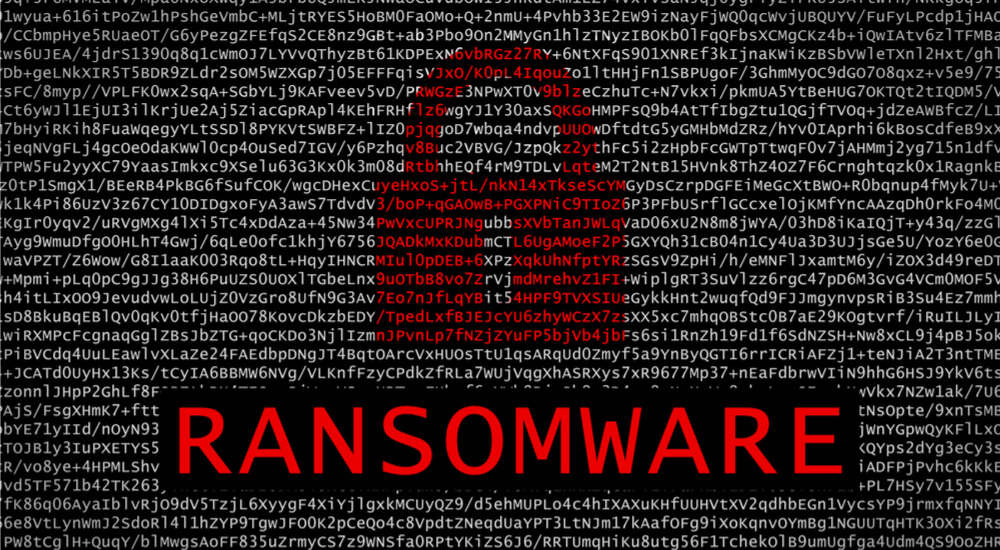
Ransomware isn’t a new threat to the cyber world. Its origins go back many years now. Over time, this threat has become only more vicious and harmful. While people were trying to deal with this cyber threat, cybercriminals moved one step further by offering ransomware-as-a-service (RaaS). Under this service, cybercriminals provide a compact malicious kit capable of launching a ransomware attack. In this article, we discuss RaaS and how you can protect your system against this threat.
What is ransomware?
Ransomware is a form of malware where cybercriminals attack your system with malicious code. Their intent is to lock you out of your system and encrypt your important and sensitive data. Further, they demand ransom from you before they provide a decryption key for your locked system and encrypted data. The problem with their modus-operandi is that they do not necessarily provide you with the decryption key even after you pay them the ransom. Thus, we highly suggest you do not pay ransom; under the best of circumstances, it will help fund more activity of the ransomware threat.
What is Ransomware-as-a-Service (RaaS)?
Ransomware-as-a-Service (RaaS) borrows from the Software-as-a-Service (SaaS) model. This subscription-based malicious model enables even the novice cybercriminal to launch ransomware attacks without much difficulty. You can find various RaaS packages in the market that reduce the need to code malware. As such, it is commonly used by cybercriminals who don’t have much technical knowledge of how to create ransomware. This malicious model allows anyone to become an "affiliate" of an established RaaS package or service.
How does it work?
Under this malicious franchise-like deployment model, cybercriminals write ransomware code and sell/rent it under an affiliate program to other cybercriminals who have the intent to launch an attack. They provide technical know-how and step-by-step information on how to launch a ransomware attack using the service, a platform which may even display the status of the attack using a real-time dashboard. Once the attack is successful, the ransom money is divided between the service provider, coder and attacker. This vicious model is so enticing to some cybercriminals that you can even see the RaaS provider’s advertisements on the dark web. There are numerous reasons why cybercriminals are attracted to this franchise-like deployment. First and foremost, it enables the ransomware authors to earn some quick money. As for the affiliates, it decreases the need for them to write malicious code. They can simply rent out easy-to-use packages at low prices from the dark web. You can find a number of RaaS operations in different forms and names on the dark web, including Cerber, Satan, Atom, Hostman and Philadelphia. Here, most of these malicious RaaS types attack users through phishing emails and exploit kits.
How to protect yourself from this threat
1. Use a reliable security suite.
To protect your system from this malicious threat, you should install a reliable anti-malware software for your system. These smart tools work on advanced algorithms to detect and in some cases remove ransomware threats. Further, they work automatically in the background to provide 24/7 security against malware threats.
2. Backup data.
The basic idea of any ransomware attack is to target users' sensitive and important data. Thus, it's important to keep a second copy of your important data ready when needed. Here, you can back up your data on external drives and/or on cloud servers for better security. This simple step will enable you to get your data back in case you suffer an attack.
3. Keep system software up-to-date.
In general, cybercriminals look for known weaknesses in your system's software. Thus, keeping system software up-to-date will offer you better security against all existing and emerging cyber threats. Here, with each software update, you get bug fixes, security patches and other useful features. In addition to implementing system software updates, you should also keep all apps on your system up-to-date for better security.
4. Avoid suspicious links and attachments.
As we discussed, cybercriminals use phishing emails and exploit kits as their preferred mode of attacking users. Thus, avoiding suspicious and unknown links & attachments will help you avert unnecessary trouble. If necessary, you can scan the attachment with your antimalware program before opening it.
Conclusion
While Ransomware-as-a-Service (RaaS) is a brain-child and one of the latest threats to prey on digital users, it becomes important to take some preventive measures to fight this menace. In addition to other basic security measures, you can also rely on advanced antimalware programs for better secure you against this threat.

About the Author: Chandra Shekhar Choudhary, a Digital Marketing Analyst & a Technical Content Writer is working at Systweak Software. His interest of writing is Anti Malware, Best Antimalware Software, Windows and Mac and he is keen interested in writing other technical blogs. Apart of writing he love traveling and cooking. Find him on Facebook and Twitter. Editor’s Note: The opinions expressed in this guest author article are solely those of the contributor, and do not necessarily reflect those of Tripwire, Inc.
Meet Fortra™ Your Cybersecurity Ally™
Fortra is creating a simpler, stronger, and more straightforward future for cybersecurity by offering a portfolio of integrated and scalable solutions. Learn more about how Fortra’s portfolio of solutions can benefit your business.

